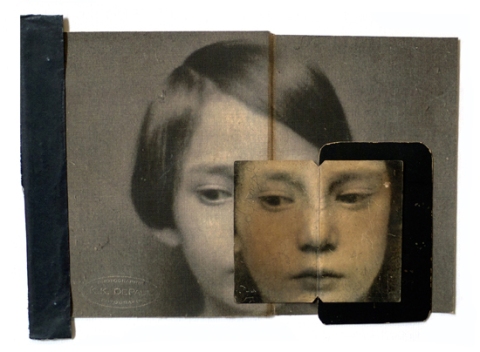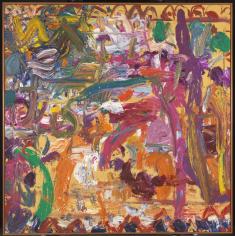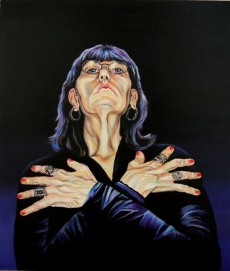Tate Britain, Until 7 October 2018
Over the years artists have transformed the Tate Britain’s Duveen Galleries in remarkable ways. In 2017 Cerith Wyn Evans suspended almost 2km of neon lighting from the ceiling, and in 2016 Pablo Bronstein responded to the space through trompe de l’oeil design and historical dance. This year Anthea Hamilton’s immersive installation The Squash lives up to expectations of an ambitious and exciting display.
Okay, so this is a rare instance of me breaking my own rules and writing about an exhibition outside the region. But on a trip to London earlier on this summer, I was lucky enough to experience this surreal and captivating work. A perfect combination of performance, sculpture, installation and costume design, Hamilton’s piece is definitely something that deserves a good juicy (pun intended) review….
Walking into the Duveen Galleries is like stepping into an uncanny museum. A clean expanse of domestic white tiles runs the length of the floor and covers a series of unconventionally shaped plinths, creating a scene akin to a giant game of Tetris. The juxtaposition of everyday modern minimalism with the building’s neo-classical architecture is daring and amusing, and acts as a catalyst for a physical experience and response.
We encounter sculptures from the Tate’s collection displayed in a somewhat subversive manner; at times too high, too low, and even back to front. Hamilton has not provided a conventional viewing experience, because she has not chosen these works for their visual qualities. They have been selected because they are considered to be the most satisfying sculptures to touch and, as such, are displayed in ways that highlight their most tactile features.
Indeed, much of Hamilton’s work is about provoking a bodily response through interaction, unexpected materials, scale and humour. Perhaps the work she is best known for is Project for a Door (After Gaetano Pesce), exhibited at the Tate Britain when Hamilton was nominated for the 2016 Turner Prize. The piece, which is inspired by a photograph of a model for a doorway by Gaetano Pesce, is a larger-than-life bare buttocks being grabbed by a pair of hands. Naturally, the explicit attention paid to what is normally private and hidden combined with its huge scale, made Project for a Door the most tweeted and talked about work of the Turner Prize that year.
However there is much more to it than simply humour and obscenity. The piece is part of a larger body of work exploring the ways we read and physically respond to images. The Squash is inspired by a photograph Hamilton found in a book several years ago, showing a person dressed as a squash-like vegetable laying amongst vines. The original photograph was from 1960 and depicted a scene from a dance by American choreographer Erick Hawkins. However Hamilton has lost the source of the image, along with most of its context.
The squash represents Hamilton’s reimagining of the scene, but the result is not an isolated viewpoint. Rather, the interpretation of the image changes by the day, as a different performer (out of a possible fourteen) chooses a costume designed by Hamilton based on a squash or pumpkin, and explores their own interpretation of the image within the space. As such, the end of the gallery is set up as a stage of sorts, framing in white tiles a figure dressed in one of Hamilton’s fantastical costumes. Creeping, crawling and dancing across the stage and gallery in slow, haunting movements, the performer is like a surreal sculpture come to life.
Overall The Squash is an impressive artwork which enables viewers to become absorbed in the world which Hamilton, along with curators Lindsay Long and Sofia Karamani, have so masterfully constructed. It is the perfect exhibition for the gallery goer who wants an experience, as well as an artwork, which perfectly balances playfulness and sophistication.





 ‘Ozymandias’ by Barbara Heller (Source: http://www.holburne.org)
‘Ozymandias’ by Barbara Heller (Source: http://www.holburne.org) ‘Anthony and Cleopatra’ by Gillian Ayres (Source: tate.org.uk)
‘Anthony and Cleopatra’ by Gillian Ayres (Source: tate.org.uk) Bohemian Rhapsody by Susan Carr
Bohemian Rhapsody by Susan Carr